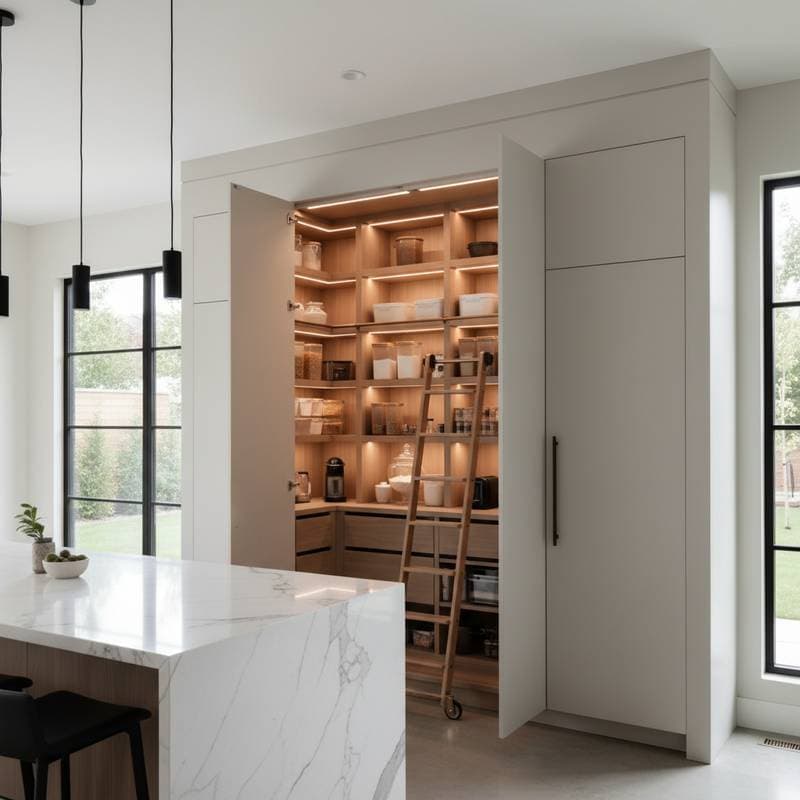Hidden Wine Cellars: Achieving 15 Percent ROI in 2025 Real Estate
Hidden wine cellars represent a refined addition to upscale homes, combining practical storage with aesthetic appeal. These concealed spaces not only protect valuable collections from environmental hazards but also increase resale value by up to 15 percent in competitive markets. Homeowners who invest in such features enjoy immediate benefits alongside long-term financial gains.
The average project cost stands at approximately $30,000, though expenses range from $15,000 for modest installations to $60,000 for expansive, high-end designs. Factors such as location, materials, and integrated systems influence the final price. Careful planning allows owners to balance luxury with budget constraints while ensuring the cellar integrates seamlessly into the home's architecture.
Key Cost Considerations
Several elements determine the overall expense of creating a hidden wine cellar. Understanding these helps homeowners make informed decisions that align with their financial goals.
1. Location and Access Points
Selecting an appropriate site minimizes costs and enhances functionality. A basement area naturally shielded from temperature fluctuations and vibrations requires less modification than converting a ground-level closet or pantry. Homeowners can achieve up to 20 percent savings by leveraging existing below-grade structures, which provide inherent insulation and reduce the need for extensive retrofitting.
2. Materials and Finishing Touches
The choice of materials directly impacts both the project's cost and its visual allure. Options like natural stone walls, tempered glass doors, and reclaimed hardwood racks elevate the space's elegance and durability. Expect to allocate between $100 and $300 per square foot, with premium selections such as custom racking systems or artisanal woodwork justifying higher investments through increased perceived value.
3. Climate Control Systems
Maintaining optimal conditions remains essential for wine preservation, influencing a significant portion of the budget. Basic self-contained cooling units begin at around $1,000 and suit smaller collections of up to 200 bottles. Larger setups, including ducted or split systems, may surpass $8,000 to handle extensive inventories while ensuring consistent temperatures between 55 and 60 degrees Fahrenheit.
4. Lighting and Security Features
Discreet illumination and protective measures add layers of sophistication and safety. Hidden entry mechanisms, such as bookcase doors or false walls, paired with energy-efficient LED strips, create an inviting yet secure environment. Smart locks and motion-sensor systems contribute an additional $2,000 to $5,000, enhancing accessibility while deterring unauthorized access and appealing to security-conscious buyers.
5. Permits and Structural Modifications
Local regulations often require permits for electrical, plumbing, or structural changes. In urban areas, design reviews ensure compliance with building codes. Tasks like reinforcing floors or installing vapor barriers can increase the total by 10 to 15 percent, but these steps prevent future issues and support the home's structural integrity.
Weighing DIY Approaches Against Professional Installation
Homeowners with relevant skills may handle certain aspects independently, but complexity often necessitates expert involvement.
DIY Options:
Individuals experienced in basic construction can manage framing, painting, and simple shelving installation. This approach suits projects using pre-fabricated kits and requires access to standard tools like saws and levels. However, it limits scope to non-technical elements and demands thorough research into wine storage best practices.
Professional Recommendations:
Engage specialists for tasks involving load-bearing walls, electrical integrations, or refrigeration setups. Professionals excel in achieving precise insulation, drainage solutions, and humidity regulation, which are critical for long-term success. Overlooking these areas risks issues such as mold growth, excess moisture, or premature wine degradation, potentially undermining the investment.
Essential Maintenance Practices
Sustaining a hidden wine cellar demands routine attention to preserve its condition and value.
- Inspect and clean cooling unit coils, along with replacing air filters, on a biannual basis to maintain efficiency.
- Monitor humidity levels monthly, targeting 60 percent to prevent cork drying or label damage.
- Address any signs of condensation or leaks promptly to safeguard surrounding materials and prevent water intrusion.
- Register cooling systems immediately to activate typical five-year warranties, ensuring coverage for repairs or replacements.
Regular upkeep not only extends the lifespan of stored wines but also demonstrates to potential buyers that the feature receives proper care.
Steps to Implement Your Hidden Wine Cellar
Transitioning from concept to completion involves methodical preparation.
- Evaluate your home's layout by measuring potential spaces, noting square footage, ceiling heights, and proximity to utilities.
- Obtain at least two detailed quotes from contractors: one emphasizing concealed access for discretion, another focusing on integrated visible elements for flexibility.
- Assess existing electrical capacity and baseline humidity to guide hardware selections and avoid costly upgrades.
- Select materials and finishes that harmonize with adjacent areas, promoting a cohesive design that enhances overall home aesthetics.
Realizing Lasting Value Through Strategic Design
A well-executed hidden wine cellar transcends mere storage, serving as a testament to thoughtful home enhancement. By prioritizing quality craftsmanship and practical features, owners secure both personal enjoyment and substantial resale advantages. This investment aligns luxury with foresight, positioning the property as a desirable choice in evolving real estate landscapes.









